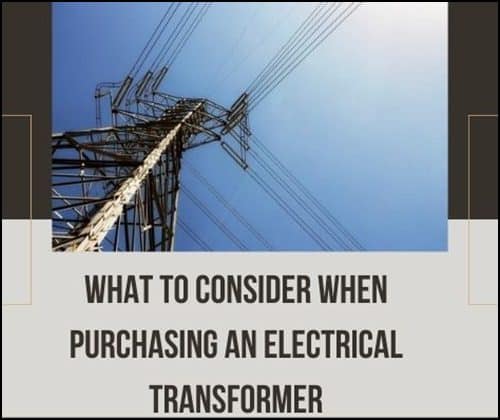
Electrical transformers are essential pieces of equipment that come in all shapes, sizes, and styles for turning electricity of one voltage into another. They are frequently utilized in industrial settings, but you can also find them in residential areas for domestic use.
Purchasing an electrical transformer can be overwhelming when you see how many types are available and are unsure what your needs are. However, you might be better positioned to purchase a new electrical transformer with confidence by considering the following points.
The Number of Phases You Need
Most electrical transformers are single-phase, but some are also three-phase. You might even find transformers with an alternative number of phases. It’s essential to understand how many phases you need so that you can purchase the correct type. Most small residential properties utilizing transformers to run computers, appliances, lighting, and other necessities of life only require single-phase transformers. However, heavy equipment in industrial settings and factories typically need three-phase transformers.
Voltage
The job of a transformer is to change the voltage of the main power supply to one that suits the equipment or property receiving it. Electrical transformers can provide different voltages, but the input voltage you choose can depend on the main power supplies, and the output voltage depends on your needs.
Location of the Transformer
You might not think it matters where you’ll put your transformer, as long as you choose one that provides the right phases and voltage, but the installation location is a crucial consideration. Some are suitable for indoor and outdoor use, while some are strictly for indoor use only. You might also find that some transformers are designed explicitly for placement near hazards like chemicals, whereas others are not. Whichever transformer you choose needs to be able to withstand the environmental factors they will face.
Your Frequency Requirements
Many transformers are designed to change voltage supply frequencies. This can be particularly important if you’re using equipment manufactured in a different country to your own. For example, the main supply voltage’s frequency in the United States is 60 Hz, which means most equipment manufactured in the United States has a 60 Hz frequency. However, equipment and machines manufactured in most other parts of the world are typically 50 Hz, which means you might need a transformer to allow for that.
The Required Load
Before making your electrical transformer purchase, you’ll likely need to be aware of your load requirements, known as kVA. kVA is the measure of power in an electrical circuit, which can depend on the current and voltage at the time. Factoring in the size of the load and the type might help the decision-making process run smoother and potentially improve your chances of selecting the most suitable transformer for your needs.
There’s no denying that purchasing an electrical transformer can be challenging when you’ve never bought one before. However, by discussing your requirements like location, frequency, kVA, and voltage with experts, you might have the transformer you need to run your home or business in no time.
Leave a Reply
You must be logged in to post a comment.